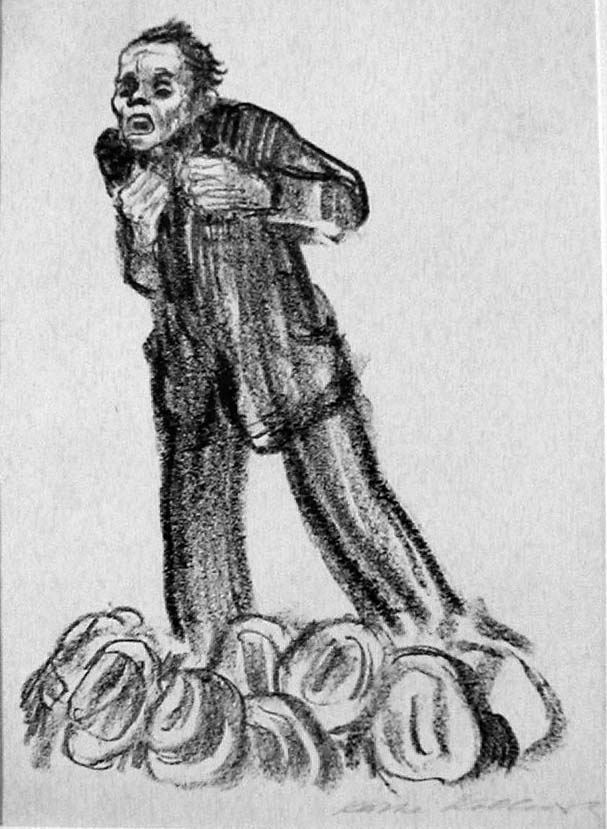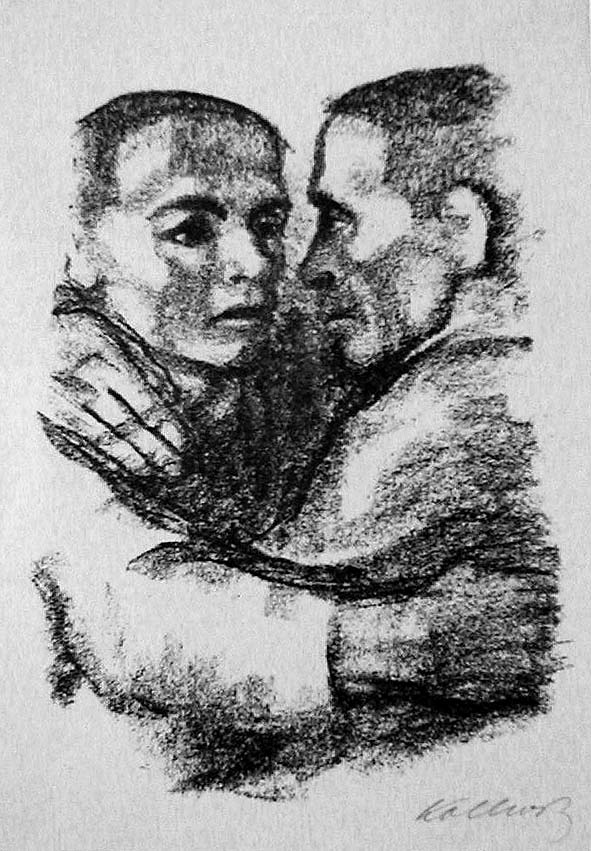|
|
|
|
"Kathe Kollwitz and German Expressionism" features over fifty works by Käthe Kollwitz plus additional works by Ernst Barlach, Max Beckmann, Fortuna Brulez-Mavromati, Heinrich Campendonck, Karl Caspar, Marc Chagall, Lovis Corinth, Otto Dix, Conrad Felixmuller, Hans Fronius, Herman Gewecke, Hans Gott, George Grosz, Erich Heckel, Hannah Hoch, Karl Hofer, Willy Jaeckel, Richard Janthur, Wassily Kandinsky, Max Kaus, Paul Klee, Ernst Ludwig Kirchner, Bernhard Klein, Adolf Koglsperger, Wilhelm Kohlhoff, Oskar Kokoschka, Frans Masreel, Georg A. Mathey, Ludwig Meidner, Edvard Munch, Gabriele Munter, Heinrich Nauen, Emile Nolde, Karl Opfermann, Max Pechstein, Georges Rouault, Andre Rouvere, Edwin Scharff, Rudolf Schlichter, Karl Schmidt-Rottluff, Richard Seewald, Max Slevogt, Georg Tappert and others. (Look for additional images to be added as time permits; all works are available for purchase unless otherwise indicated.)
One of the features of this virtual show is be the exhibition of groups of works by important artists like Barlach (most of whose woodcuts for a 1919 expressionist poem, Der Kopf, we will show as a group), Chagall, whose etchings for Dead Souls were executed immediately after he returned from Berlin in 1922 (where he learned etching and discovered that during the preceding eight years, while he had been trapped in Russia first by the outbreak of the first world war and then by the Russian Revolution, the German Expressionists had been exhibiting his works in their shows), Dix, whose post-World War II cycle illustrating the Gospel according to St Matthew shows the events of the gospel in the light of Germany's history during the twentieth century, Fronius' and Kokoschka's lithographs based upon the love-hate relationship of the biblical Saul and David, a group of 1919 woodcuts by Kirchner, and works by Corinth and Pechstein to show changes in the movement over its first years.
At the same time, we will also include important new acquisitions of some of the masterworks of German Expressionism, including works by Beckmann, Heckel, Nolde ("The Prophet," one of the signature works of German Expressionism), and Schmidt-Rottluff (his 1918 woodcut, "Kopf," illustrated in almost every book on German Expressionist printmaking). To indicate the breadth of Expressionist interest in literature (in addition to works by Barlach and Kollwitz, done to illustrate poems and plays), we will also include some lithographs by Arbit Blatas on the theme of Bertolt Brecht and Kurt Weill's Threepenny Opera. Another of the distinctive features of German Expressionism is its interest in the portrait, and we will feature many works that focus on a single face to see what it reveals about the person to whom it is attached.
|
|
|
|
|
|
|
Der Agitationsredner / The Agitator (Kl. 224). Original lithograph, 1926. Edition: 25 signed impressions on Japan, 50 signed impressions on white Bütten, and an unsigned impression. Ours is one of the 50 on white Bütten. A powerful and painful study of the politics of the 1920s. Image size: 314x216mm. Price: 3900.
|
|
|
Verbrüderung / Fraternal love (Kl. 199b). Original lithograph, 1924. Edition: 400 signed impressions. A good impression with the remains of old paper-tape around the borders verso. A powerful image of the possibility of humanity's search for love as a relief from pain and oppression. Included in German Expressionist Prints & Drawings, 1989 (LACMA, p. 52). Images size: 235x170mm. Price Please call or email for current pricing information.
|
|
|
|
|
|
One of the greatest graphic artists of all time, Kollwitz, the granddaughter of a radical preacher and the daughter of a union organizer, a pacifist, a lover of childre, and a socialist, spent her life in an autocratic state which, whether rulerd by the Kaiser or the Nazis, hated everything for which she stood. Ther first woman to be elected professor at the Prussiian Academy, she lost her position as soon as Hitler came to power. The two prints above—Der Agitationsredner / The Agitator (Kl. 224) and Verbrüderung / Fraternal love (Kl. 199b)—seem to sum up the possibilities that Kollwitz foresaw for her country in the 1920s, either to follow those voices inciting hatred and setting each against the other or to find away for all to live together in loving harmony. Kollwitz's art shows us one who respoonded to her country's choice with anguished protest, as if this print might finally be the one to bring Germany back to her senses.
|
|
|
|


